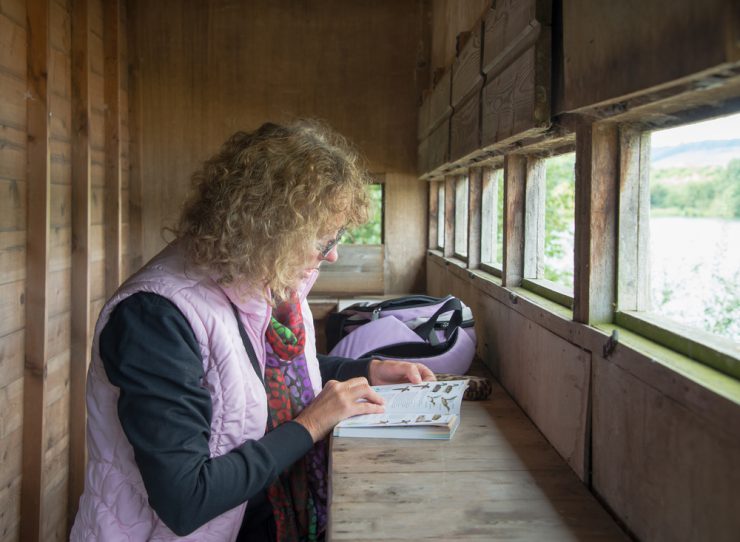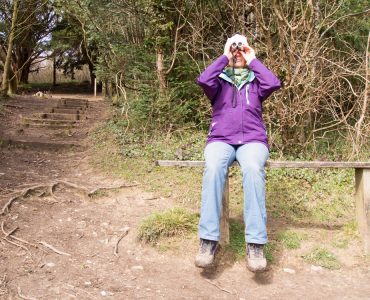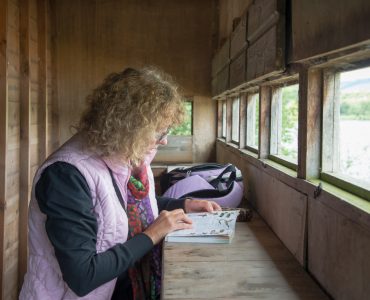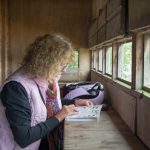The Chiffchaff is a summer bird in Britain, and is a type of leaf warbler, very tiny. They come with the first batch of migrants to the country and are pleasant songbirds. During winter they fly to the Mediterranean and to West Africa. Their appearance during the summer or spring season differs slightly from winter. In summer they are brownish green in colour at the upper regions of the body and the underbelly. The most beautiful and recognisable part of the chiffchaff is its eyes. They are a surrounded by a very pale ring, with a darkish stripe right through it, and the eyebrows are also pale. The chiffchaff is normally seen high up towards the top of trees or shrubs, and mostly in the woodland regions.
The song of a chiffchaff is something similar to its name, sometimes going ‘chiff chaff’ and sometimes sounding like ‘zilp zalp’. Their bird calls sound something like this – hooeet or as hweet. The bird rarely sings during the autumn season, and the main singing time comes during summer and spring, which is when the bird is in the British region.
The chiffchaff’s feeding habits are very normal, tending to feed upon midges, flies and other such insects, as well as moths or caterpillars. The feeding is conducted after a thorough rummaging among bushes, shrubs and canopies of large trees. The chiffchaff’s are brilliant leaf explorers, experts at searching the under side of leaves, which is where the aphids are found. Plus, the bird also feeds on the sugary sap given out by trees.
The chiffchaffs that breed in Britain tend to move to the Mediterranean and African regions during winter, though in recent times there have been birds seen to be staying over in Britain during winter as well. However, the ones found in Britain in winter are originally birds that have flown in from the European or Scandinavian regions, with very few being actual British living birds.
Chiffchaffs nests are built by the female bird, which takes a dome shape, and is located very near the ground level, amidst tall grasses, bushes and shrubs, and sometimes even among creepers. The female bird makes use of stems and leaves from dead vegetation for building the secure nest, and the inner walls of the nest are lined with feathers. The incubation procedures on the eggs are also done by the female, which can last about 13 to 14 days. Their breeding season is during April and May, with 1 to 2 clutches and about 4 to 9 eggs in the female. The fledging process may take up to 12 or 15 days. The eggs are of a glossy texture, around 15 mm to 12 mm in size. They are white in colour with markings on it of a purplish or blackish colour. The young chiffchaffs when hatched are looked after and fed by the female bird.
The chiffchaff population was under threat during the 60’s and 70’s, but now however they have become quite large in number, and increasing, due to the good and mild weather conditions in winter.









